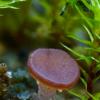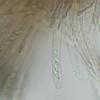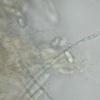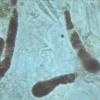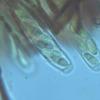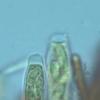
19-12-2025 10:10
Patrice TANCHAUDBonjour, récolte réalisée en milieu dunaire, a

18-12-2025 17:23
 Bruno Coué
Bruno Coué
Bonjour,je serais heureux d'avoir votre avis sur c

18-12-2025 21:17
Pol DebaenstThe identification took me to Byssonectria deformi

18-12-2025 18:07
Margot en Geert VullingsThese plumes were found on rotten wood.They strong

17-12-2025 18:35
 Michel Hairaud
Michel Hairaud
Bonjour à tous/Hi to everyone I am passing along

15-12-2025 15:48
 Danny Newman
Danny Newman
Melanospora cf. lagenaria on old, rotting, fallen

15-12-2025 15:54
 Johan Boonefaes
Johan Boonefaes
Unknown anamorph found on the ground in coastal sa

15-12-2025 21:11
 Hardware Tony
Hardware Tony
Small clavate hairs, negative croziers and IKI bb

15-12-2025 07:09
 Danny Newman
Danny Newman
indet. Rutstroemiaceae sp. on unk. fallen leavesMc
Sp
ruiz Jose,
26-12-2024 19:29
Hans-Otto Baral,
26-12-2024 19:57

Re : Sp
Did this fungus grow on sandy soil? It appears to be a Helotiaceae, perhaps a Bryoscyphus. Your spore table lacks a scale, did you measure them?
Whether or not the asci are inamyloid should bechecked with Lugol. The reaction you mention is due to the VBs in the cortical cells and paraphyses. VBs often react with iodine.
ruiz Jose,
26-12-2024 21:46
Re : Sp
Hola Zotto, crecía en zona arenosa, si tengo medidas, en cuanto a la reacción a melzer de las ascas son las dos últimas fotos, no se aprecia bien, pero es la foto que tengo.medidas
(7) 7.8 - 9.7 (10.3) × (3,4) 3,6 - 4,1 (4,4) µm
Q = (1,9) 2 - 2,5 (2,7) ; N = 47
Me = 8,7 × 3,9 µm; qe = 2,2
(7) 7.8 - 9.7 (10.3) × (3,4) 3,6 - 4,1 (4,4) µm
Q = (1,9) 2 - 2,5 (2,7) ; N = 47
Me = 8,7 × 3,9 µm; qe = 2,2
Hans-Otto Baral,
27-12-2024 10:32

Re : Sp
o.k., below 10 µm.
In the worst case the ascus apex was hemiamyloid, a term which you perhaps heard of. Using Melzer instead of Lugol results in a negative reaction, unless you have mounted the preparation before in KOH and the washed with water.
A symbiotic association with the bryophyte could be possible.
ruiz Jose,
27-12-2024 14:01
Re : Sp
Ok, muchas gracias Zotto lo tendré en cuenta, saludos

